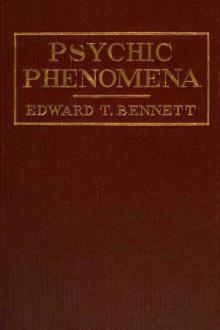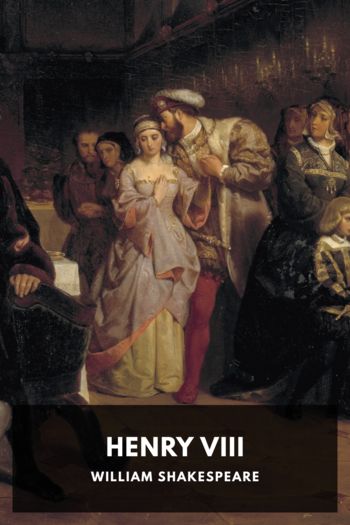Don Quixote by Miguel de Cervantes Saavedra (electric book reader TXT) 📕

Description
Don Quixote is a novel that doesn’t need much introduction. Not only is it widely considered the greatest Spanish literary work of all time, one of the greatest literary works in history, and a cornerstone of the Western literary canon, it’s also considered one of the first—if not the first—modern novels.
This Standard Ebooks edition is believed to be the first ebook edition of Don Quixote to feature a full transcription of translator John Ormsby’s nearly 1,000 footnotes. Ormsby as an annotator deftly explains obscure passages, gives background on the life and times of 1600s Spain, references decisions from other contemporary translators, and doesn’t hold back from sharing his views on the genius—and flaws—of Cervantes’ greatest work.
The story is of the eponymous Don Quixote, a country noble who, in his old age, reads too many chivalric romances and goes mad. After convincing his grubby servant, Sancho Panza, to join him as his squire, he embarks on an absurd and comic quest to do good and right wrongs.
Today Don Quixote’s two volumes are published as a single work, but their publication came ten years apart. Cervantes saw great success with the publication of his first volume, and appeared to have little desire to write a second volume until a different author wrote a spurious, inferior sequel. This kicked Cervantes into gear and he wrote volume two, a more serious and philosophical volume than the largely comic first volume.
Despite being written in 1605 and translated in 1885, Don Quixote contains a surprising amount of slapstick laughs—even for the modern reader—and narrative devices still seen in today’s fiction, including meta-narratives, frame narratives, and metafiction. Many scenes (like Quixote’s attack on the windmills) and characters (like Sancho Panza and Lothario) are so famous that they’re ingrained in our collective culture.
Read free book «Don Quixote by Miguel de Cervantes Saavedra (electric book reader TXT) 📕» - read online or download for free at americanlibrarybooks.com
- Author: Miguel de Cervantes Saavedra
Read book online «Don Quixote by Miguel de Cervantes Saavedra (electric book reader TXT) 📕». Author - Miguel de Cervantes Saavedra
Proverb. 180. ↩
Proverb. 246. ↩
These are towns of La Mancha, though from the wording of the passage it might be supposed that they lay on the other, the Andalusian, side of the Sierra Morena. It is significant that Cervantes always speaks of “entering” and “coming out of” the Sierra Morena, never of ascending or descending it; and, in fact, on the north side the Sierra rises but little above the level of the great Castilian plateau and the road enters the gorge of Despeñaperros, and reaches the Andalusian slope with comparatively little ascent. ↩
“Dapple,” as I have said elsewhere, is not a correct translation of rucio, but it has by long usage acquired a prescriptive right to remain the name of Sancho’s ass. Rucio is properly a light or silvery gray, as pardo is a dark or iron gray.
The passage—beginning at “That night they reached the very heart,” etc., and ending with “returned thanks for the kindness shown him by Don Quixote”—does not appear in the first edition, in which there is no allusion to the loss of the ass until the middle of Chapter XXV, where, without any explanation of how it happened, Cervantes speaks of Dapple as having been lost. When the second edition was in the press, an attempt was made to remedy the oversight, and the printer, apparently proprio motu, supplied this passage. Chapter XXX, where Don Quixote laments the loss of his “good sword,” suggested Ginés de Pasamonte as the thief, and Chapter XXV the promise of the ass-colts; but in such a bungling manner was the correction made that the references to the ass as if still in Sancho’s possession (nine or ten in number) were left unaltered, though the first of them occurs only four or five lines after the inserted passage. In the third edition of 1608 some of these inconsistencies were removed, and in the Second Part Cervantes refers to the matter, and charges the printer with the blunder. What he originally intended, no doubt, was to supplement the burlesque of the penance of Amadís by a burlesque of Brunello’s theft of Sacripante’s horse and Marfisa’s sword at the siege of Albracca, as described by Boiardo and Ariosto; and it was very possibly an afterthought written on a loose leaf and so mislaid or lost in transitu. The inserted passage is clearly not his, as it is completely ignored by him in chapters III, IV, and XXVII of Part II, and is inconsistent with the account of the affair which he gives there. Hartzenbusch removes the passage to what he conceives to be its proper place in Chapter Chapter XXV, but it is hardly worth while, perhaps, to alter the familiar arrangement of the next. See notes on Chapter XXC; and III, IV, and XXVII of Part II. ↩
Poltinos, “ass-colts,” has evidently been omitted here in the original, and I have therefore supplied it. ↩
This sonnet Cervantes afterwards inserted in his comedy of the Casa de los Zelos, a proof that he himself had as good an opinion of it as Don Quixote; though Clemencín says, and not without some reason, that “it is no great things”—“no vale gran cosa.” ↩
A reference to the proverb, Por el hilo se saca el ovillo—“by the thread (or clew) the ball is drawn out.” In the sonnet the lady’s name is Fili, which Sancho mistakes for hilo or filo. The substitution of “Chloe” by which the play on the words may be imitated is a happy idea of Jervas’s which has been generally adopted by subsequent translators without any acknowledgment. ↩
Proverb 182—meaning, I don’t want a thing that has any inconvenience attached to it. ↩
This is the explanation commonly given of the phrase de ambar, and it is true that scented doublets were in fashion in the sixteenth century; but it seems somewhat improbable that a tattered doublet which had been for six months exposed to all weathers would have retained sufficient perfume to be detected. ↩
This indicates that the spot Cervantes had in his eye was somewhere above the head of the Despeñaperros gorge and commanding a view of the valley of the Guadalquivir; and the scenery there agrees with his description. He was, no doubt, familiar with it from having passed through it on his journeys between Madrid and Seville in the years between 1587 and 1598. The broom, mentioned farther on, is very abundant in this part of the Sierra Morena. The name of Cardenio, too, was probably suggested by Venta de Cardenas, a halting place at the mouth of the gorge. ↩
Grande de España—one enjoying the privilege of remaining covered in the presence of the sovereign. ↩
Cordova was famed for its horses. ↩
This is an example of the clumsy manner in which Cervantes often constructed his sentences, beginning them in one way and ending them in another. ↩
I.e. Aesop. ↩
Sancho in his aptitude for blunders takes “Elisabad” to be the name of some abad or abbot. There are three Madasimas mentioned in the Amadís but not one of them is a queen, nor has Master Elisabad anything to do with any of them. He was in the service of the lady Grasinda, and by her orders attended Amadís when wounded. Scott, in the article on the Amadís in the





Comments (0)